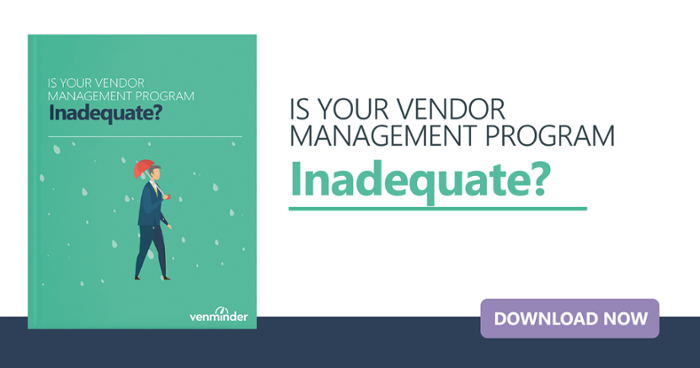Vendor management, or more commonly referred to as third-party risk management, at its core, is the process of identifying your key vendors and understanding the risks associated with doing business with them. While having a firm grasp on the vendors with whom you are doing business isn’t new, the regulatory expectations continue to evolve and grow at a rapid pace.
Whether you’re dealing with the very basic vendor or the most cutting-edge high-tech organization, there are certain things you should discern about every vendor.
7 Core Elements for Vendor Management
There are some regulations out there that do a great job at explaining the basics of vendor management, such as FDIC FIL 44-2008, FIL 3-2012, OCC Bulletin 2013-29, and OCC Bulletin 2017-7. While much of the guidance out there is specific to financial institutions or healthcare, it can still be a great resource for any organization.
Regardless of industry, a well-managed and functioning program should include at least these 7 core elements:
- Scoping - To make sure you’re getting the most out of your third-party risk management relationships, it’s important to consider scoping. This requires a focus around defining what a vendor provides to your organization.
- Risk and criticality assessments - As you gather the various due diligence documents, start looking for gaps or areas that may cause concern. Use a rating system to be objective and consistent and consider how critical a vendor may be to your organization should they be unable to provide services. Where you identify risks, determine what you can do to address and minimize exposure.
- Due diligence standards - Know the organization with whom you’re doing business. Determine their good standing and licensing to conduct business. Learn about their reputation and gather documents to show they are a well-managed and compliant operation.
- Vendor selection and contract management -Set due diligence standards around vendor selection. Be sure that the vendor has certain obligations, such as notifying you of a data breach or changes in ownership or leadership. Make sure each parties’ roles and responsibilities to one another are clearly defined.
- Ongoing monitoring - How will you manage this vendor going forward? Are there performance metrics that will require regular reporting? Is there some sort of quality of service you need to measure?
- Termination and exit strategies - Unfortunately, every vendor partnership comes to an end. Prepare for this by determining early on in the relationship how termination will be handled. Address items like the notification process, how data will be destroyed or returned and if you’ll bring the function back in-house or outsource to a different third party.
- Executive Leadership and/or Board involvement - Senior management and the board of directors must be kept informed of the status of your vendor management program. Inform and seek guidance and approval, when needed.
You may be reading these seven core elements and thinking they’re obvious, but surprisingly they’re often forgotten. Put a strong focus on each one and your program will be headed in the right direction.
Is your third-party risk management program adequate? Learn more in this eBook.













